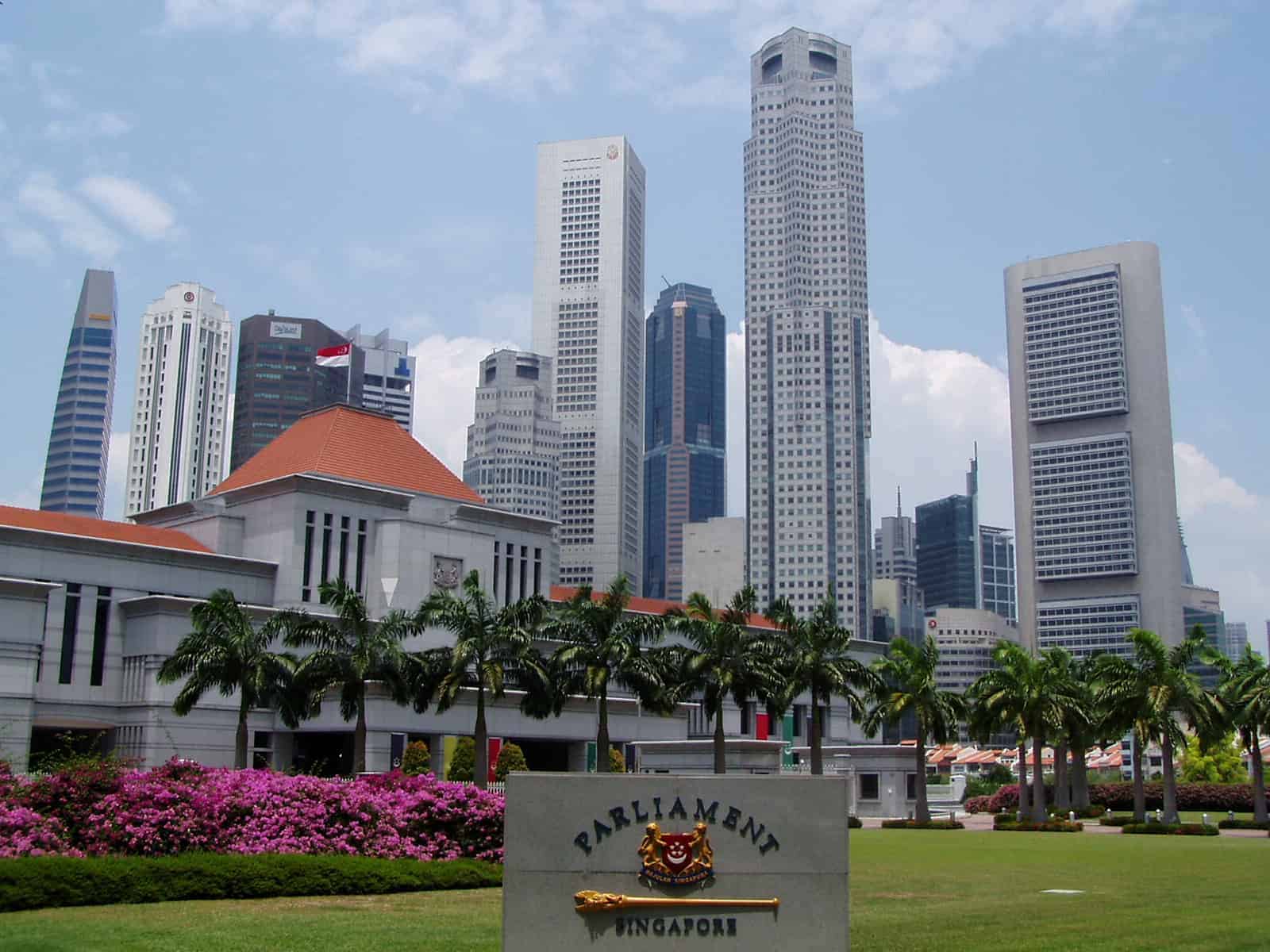As public interest in cryptocurrencies and decentralized finance (DeFi) grows by leaps and bounds, the politicians in Singapore, too, want to understand what the underlying blockchain technology is all about.
Notwithstanding the current crypto market dip, the total market value of cryptocurrencies stands at over US$2 trillion and more than US$140 billion remain locked into DeFi protocols.
As more and more countries across the world launch central bank digital currency (CBDC) initiatives, Singapore, a global financial hub, is also exploring emerging technologies on multiple fronts in a bid for its economy to be future-ready. The overseers of the city-state of 5.7 million people are in the midst of developing a settlement platform for financial institutions to support the future CBDCs of multiple countries — while keeping their eyes on rapid developments in DeFi.
“DeFi is a fast-growing part of the crypto-asset ecosystem. However, most DeFi applications are less than two years old,” said Tharman Shanmugaratnam, chairman of the Monetary Authority of Singapore, in a written response to a question that the parliament had about DeFi. “The viability of DeFi has not been proven and its risks are not yet fully clear. MAS has been closely studying developments in DeFi to assess its potential for broader use.”
In response to the Parliament’s inquiries, Shanmugaratnam also explained how DeFi works.
“DeFi refers to the autonomous execution of financial transactions by smart contracts deployed on decentralised blockchains, without the need for intermediaries,” Shanmugaratnam told the parliamentarians. “These smart contracts replicate the financial intermediation function normally carried out by a financial institution in providing services such as borrowing, lending or insuring.”
While some may consider Shanmugaratnam’s explanation a little technical for a regular parliamentary sitting, MAS — Singapore’s central bank and financial regulator — is no stranger to blockchain technology.
See related article: Report: 1.7 million DeFi users now on Ethereum, 50% more since Jan. 1
Singapore’s journey from experimentation to commercialization
In 2016, MAS collaborated with R3, a distributed ledger technology (DLT) and blockchain software development company as well as a consortium of financial institutions such as Bank of America Merrill Lynch, HSBC, and J.P. Morgan on a proof-of-concept project to conduct inter-bank payments using blockchain technology. This marked the first phase of “Project Ubin” — a multi-year project to explore a central bank digital currency using DLT.
“When cryptocurrencies and public blockchains first emerged, we struggled to understand what they were and how they worked. The idea that a group of miners linking up blocks into a chain could turn computational power into assets of value was highly bewildering,” said Jacqueline Loh, MAS’ deputy managing director, at the Bank for International Settlements (BIS) Innovation Summit in March this year. “We too had our doubts and felt that the best way to understand the technology, was to test it out for ourselves and learn through practical experimentation.”
“MAS recognized that distributed ledger technologies held the potential to empower an industry infrastructure for more efficient clearing and settlement of payments and securities,” Loh said. “Such an infrastructure would benefit the entire financial sector, but no individual firm had an incentive to drive exploration of this possibility.”
See related article: How S. Korea and Singapore are grappling with crypto investor protection
Loh said that through Project Ubin, “the benefit to the industry had become clear, along with private incentives for commercialization.” The project, which concluded last year, saw the development of a blockchain-based multi-currency payments network prototype through the collaboration of U.S. investment bank J.P. Morgan and Temasek, Singapore’s state-owned investment company.
The project has since moved from experimentation towards commercialization. Last month, J.P. Morgan, Temasek and Singapore’s DBS Bank announced that they were partnering to form Partior, a technology company for developing a blockchain-based multi-currency payments network for commercial cross-border clearing and settlements globally. Unlike Project Ubin, Partior will be based on digitized commercial bank money rather than CBDC, and trials are expected this year.
“Partior means to share or distribute in Latin, and there is no name more appropriate as the genesis of this effort was the public-private initiative Project Ubin,” wrote Sopnendu Mohanty, MAS’ chief fintech officer, in a LinkedIn post. “Ubin name came from an island in Singapore called Pulau Ubin, which means ‘Granite Island.’ According to a legend, an elephant, a frog, and a pig challenged each other to reach the shores of Johor else they will turn to stone. They failed and turned to three stones which collectively formed the island,” Mohanty wrote. “So the moral drawn — work together.”
See related article: JPMorgan, DBS Bank and Temasek partner on ‘game-changer’ blockchain for payments
Introducing Project Dunbar
Building on its work on a domestic multi-currency settlement platform managed by a group of commercial banks in Project Ubin, MAS is now partnering with the BIS Innovation Hub Centre in Singapore and the central banking community on another wholesale CBDC project — “Project Dunbar” — to design, develop and test new m-CBDC models for cross-border payments involving wholesale CBDCs.
According to the BIS Innovation Hub in Singapore, Project Dunbar will explore smart contracts and multi-CBDCs, such as mechanisms and algorithms that enable more efficient matching and settlement of foreign exchange transactions, including learning from developments in public blockchains and DeFi.
“The initial work would focus on defining the digital currency stack and the layers, how they interact, the type of controls that need to be in place, and the design choices to balance between process efficiency and practicality of governance,” wrote Toh Wee Kee, MAS’ Specialist Leader (Distributed Ledger Technology) in a blog post. “The intermediate goal would be to design, build and test this architecture as applied to a regional m-CBDC network with multiple central banks.”
“Even while the model of m-CBDC on a common platform shows promises, it is unlikely that the world will land on a single common settlement platform. The model may be useful for regions where requirements and payment policies are already similar, and a common application may be more cost-effective,” Toh wrote. “In such a scenario, there will still be fragmentation, with multiple regional platforms as well as single-jurisdiction single-currency platforms. New connectivity models for linking up of such networks will be further explored as part of the project.”
Asia leading CBDC connectivity
Aside from Singapore, Hong Kong together with China, the United Arab Emirates, Thailand and the BIS Innovation Hub in Hong Kong, are also collaborating on a multiple-CBDC bridge project for cross-border payments. “These are the Hub’s contributions to the central banking community as we pilot global multilateral platforms for cross-border payments involving wholesale CBDCs,” said MAS’ Loh at the BIS Innovation Summit.
Amit Ghosh, head of Asia Pacific for R3, a software firm, told Forkast.News in an email: “Central banks involvement with CBDCs have gained momentum in recent years with APAC leading innovation and growth in this sector through various pilot projects such as the Monetary Authority of Singapore’s Project Ubin, as well as Bank of Thailand and Hong Kong Monetary Authority’s Project Inthanon-LionRock.” R3 provided the Corda blockchain platform for the Project Inthanon-LionRock research.
CBDCs offer profound benefits and use cases for governments as well as the private sector, including enhancing monetary policy, tokenizing and fractionalizing bonds, and tokenizing payments, Ghosh said. He added that central banks in the Asia Pacific are actively exploring CBDCs across the broader payment ecosystem, moving beyond traditional partnerships with financial institutions to collaborating with companies of all sizes. In the latest phase of Project Inthanon, Bank of Thailand integrated its retail CBDC with the Corda-based B2P procure-to-pay platform — enabling corporates to use CBDCs for invoice financing payments, Ghosh said.
See related article: 4 central banks and BIS exploring CBDC bridge for Asia and Middle East
Will Singapore launch a retail CBDC?
Michael Conn, CEO of Zilliqa Capital, a blockchain investment company, told Forkast.News: “It is clear to me that the Singaporean government is approaching the topic of CBDCs and DeFi very thoughtfully, as they should. The government has clearly demonstrated the benefits of wholesale CBDCs during Project Ubin, when it was shown that multi-currency payments and settlements across borders could be achieved in real-time and at lower risks and costs.”
“The next step will be retail CBDCs and DeFi,” Conn said. “On this point the government seems to be cautiously evaluating all options of these potentially industry-shifting technological and financial innovations.
See related article: How open DeFi markets in Southeast Asia can drive financial inclusion
Despite the country’s extensive work on wholesale CBDC, such as the one MAS issued as part of Project Ubin, which is used solely for payments within the banking system, Singapore is approaching a retail CBDC — a CBDC that can be used by the public — with greater caution.
“If a retail CBDC becomes pervasive, it could have significant implications for banks’ deposit base and, more importantly, their lending activities,” said Shanmugaratnam in his parliamentary reply. “MAS is carefully studying the costs and benefits of a retail CBDC, and has not made a decision on this yet.”
See related article: Hong Kong now exploring retail CBDC in upcoming Project Aurum





